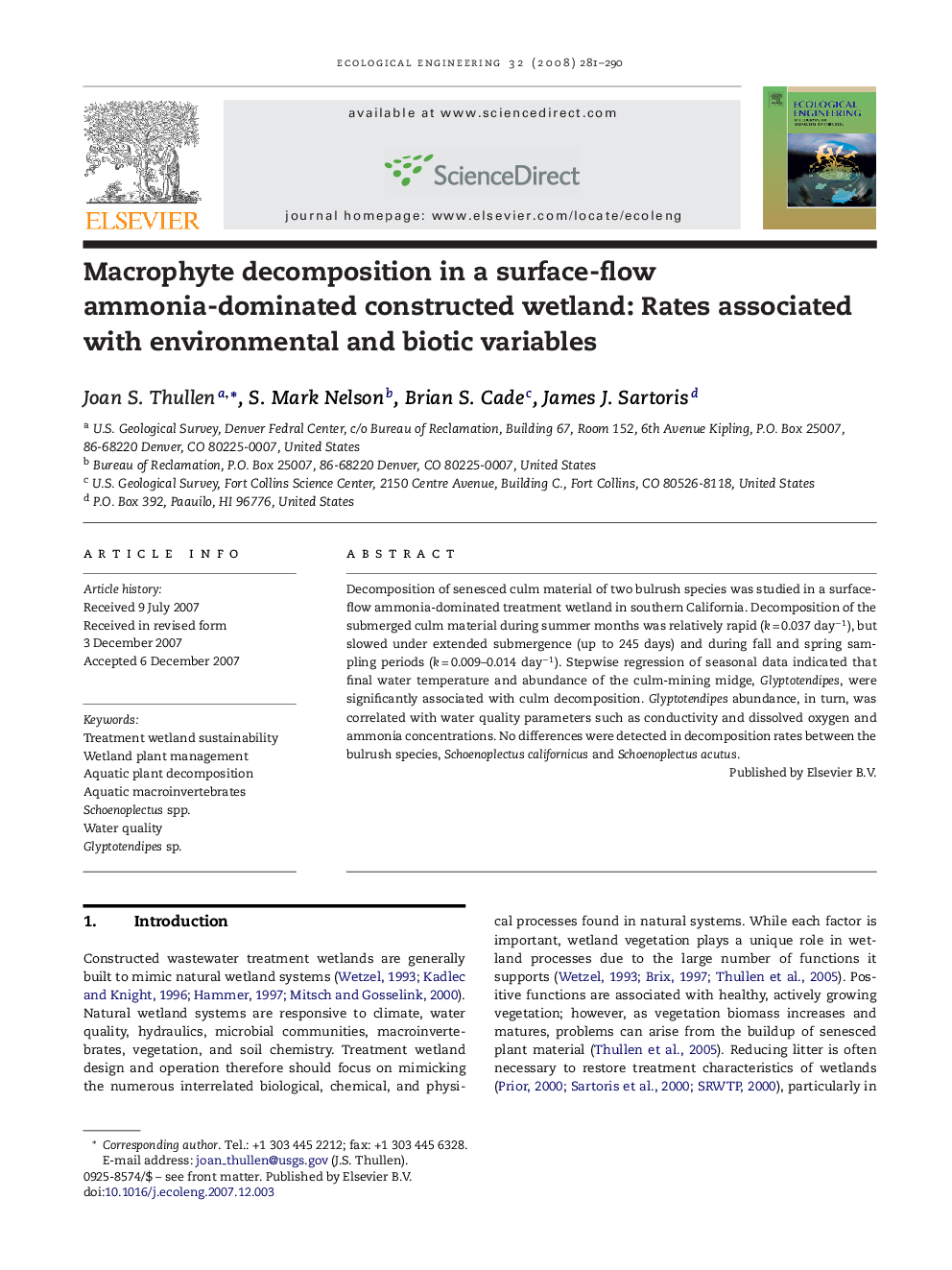| Article ID | Journal | Published Year | Pages | File Type |
|---|---|---|---|---|
| 4391009 | Ecological Engineering | 2008 | 10 Pages |
Decomposition of senesced culm material of two bulrush species was studied in a surface-flow ammonia-dominated treatment wetland in southern California. Decomposition of the submerged culm material during summer months was relatively rapid (k = 0.037 day−1), but slowed under extended submergence (up to 245 days) and during fall and spring sampling periods (k = 0.009–0.014 day−1). Stepwise regression of seasonal data indicated that final water temperature and abundance of the culm-mining midge, Glyptotendipes, were significantly associated with culm decomposition. Glyptotendipes abundance, in turn, was correlated with water quality parameters such as conductivity and dissolved oxygen and ammonia concentrations. No differences were detected in decomposition rates between the bulrush species, Schoenoplectus californicus and Schoenoplectus acutus.
